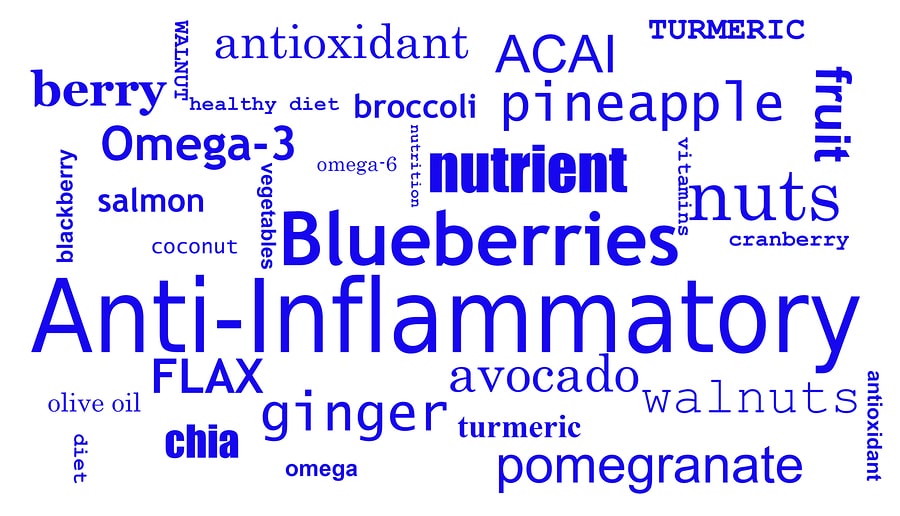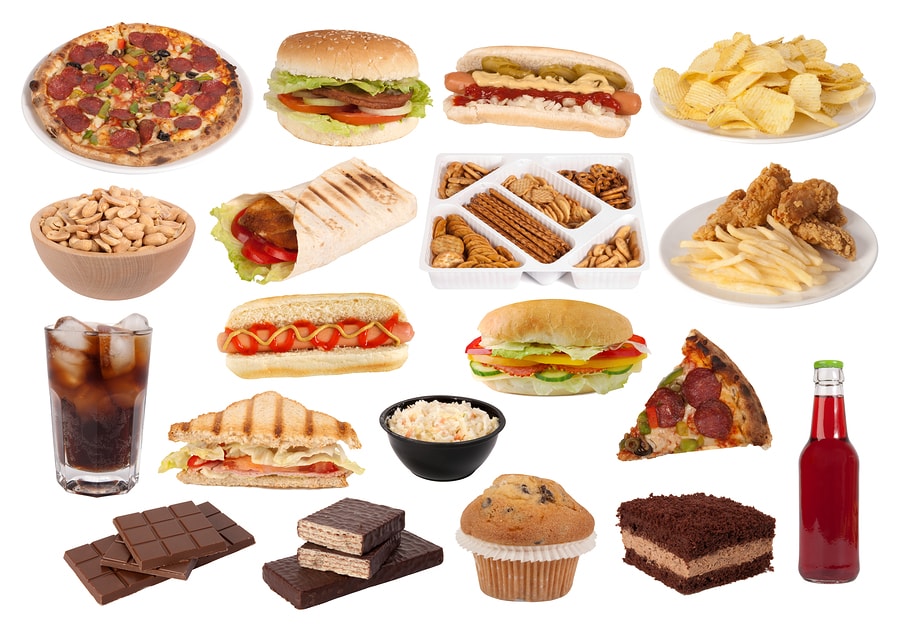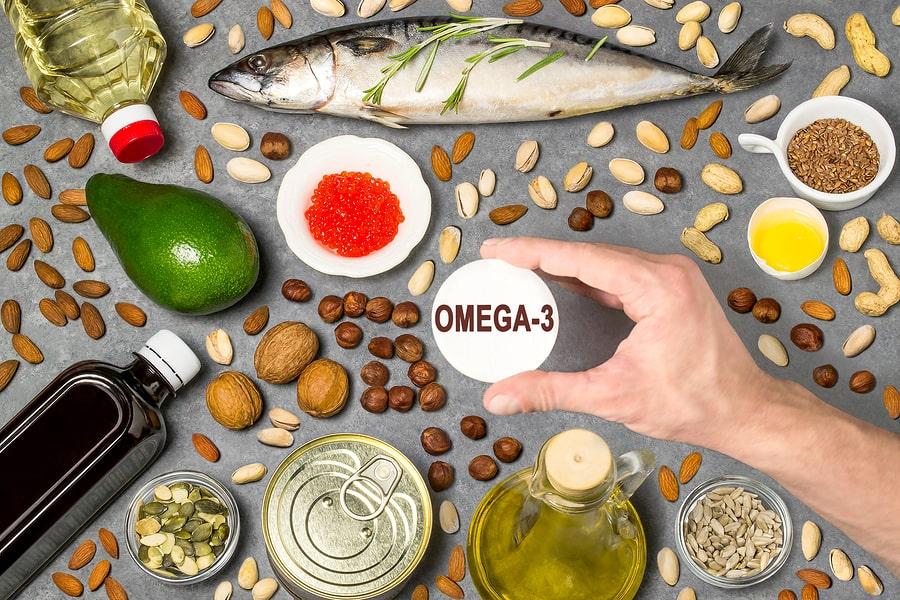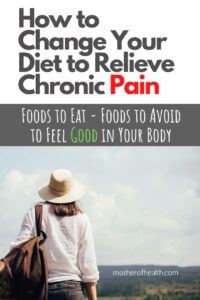One of the most difficult things for people to deal with is chronic pain. This is not like acute pain, where you get the occasional headache or your wrist hurts from spraining it.
Chronic pain is a type of ongoing pain that may or may not be triggered by something. But, you should be aware that what you eat can greatly impact your pain so it’s vital you learn what foods help you feel good in your body and which can cause mischief.
Here we’ll report on how to change your diet to relieve chronic pain.
There are many conditions that can cause chronic pain, but these are some of the most common sources:
- Crohn’s disease
- Other autoimmune conditions
- Arthritis
- Fibromyalgia
- Irritable bowel disease/irritable bowel syndrome
- Migraines and headaches
- Back pain
- Previous injury
Best foods to reduce chronic pain
Before getting into specific diets for the different types of chronic pain, let’s first discuss some general diet tips. These are nutritional tips that can help you no matter what source of chronic pain you have. They all have one thing in common; they reduce inflammation naturally
So many different areas of chronic pain come directly from inflammation. They are made worse by certain foods, which is why this is a good list for just about everyone. Try to follow these important diet tips whenever possible to relieve chronic pain:
1. Eat whole and fresh foods
This rings true for most types of inflammation or sources of chronic pain. When you start eating a lot of preservatives, chemicals, and additives, it irritates your stomach. This can bring on flare-ups with conditions like Crohn’s or IBS.
Even if you believe you are choosing ‘healthy’ processed foods, they are still processed foods.
A better option is to go for foods that are fresh and whole. Always choose fresh produce, fresh herbs, whole blocks of cheese you shred yourself, and meat that comes from the deli, not the frozen food section.
2. Get your healthy fats
This is another diet tip that is good for just about everyone, whether you have chronic pain related to what you eat, or you are trying to lose weight.
Healthy fats, particularly with omega-3s, can help fight the pain and naturally reduce inflammation. A super easy way to get more omega-3s in your diet is by having fatty fish like sardines, tuna, salmon, and mackerel.
3. Reduce your dairy consumption
This is one of the harder things for people to do, but it can really help you a lot.
You may not have full lactose intolerance, but many people have a sensitivity to lactose, which can cause health problems. This is common among people with fibromyalgia, one of the top conditions that cause chronic pain.
Try to eat less dairy, which includes milk, cheese, ice cream, and coffee creamer.
4. Don't eat veggies that can lead to pain
While fresh produce and greens, in general, are good for you, there are some vegetables that can actually lead to pain flare-ups if you have fibromyalgia, joint pain, or Crohn’s disease.
These typically include nightshade vegetables like eggplant and tomato. These frequently lead to pain in the joints if you have arthritis.
What are the best anti-inflammatory foods?

Now that you know the basic diet tips for chronic pain flare-ups, you can choose some anti-inflammatory foods.
These are not just foods that are safe because they don’t increase inflammation in your body, but they can actually help to fight inflammation from other foods.
Here are some of the best foods to add to your diet if you struggle with pain as a result of inflammation, such as Crohn’s disease, irritable bowel syndrome and other digestion issues, and even arthritis.
5. Add leafy greens to your diet
Leafy greens are the healthiest foods to add to your diet. They are powerful low-calorie, low carb, low-fat superfoods that are medicine for inflammation.
Spinach, kale, and collard greens are packed with nutrients to fight inflammation in your body. They are also full of antioxidants and are easy to add to different types of meals. Plus, you will get plenty of vitamins A, C, and K.
6. And don't forget beets
Another vegetable to consider adding to your diet to help fight inflammation is beets. These deep pink vegetables contain a lot of antioxidants to reduce chronic pain.
If you don't love them, it may be that you just haven't eaten them in the right way.
Here's an easy way to bring out their delicious sweetness.
Roasted citrus beets
- Wash 4-5 medium beets
- Pat dry and rub with olive oil
- Place on baking sheet into a preheated 400-degree oven for 1 hour, or until tender
- Remove from oven and let cool
- Peel them under cool running water and cut them into slices
Citrus vinaigrette
- 1/4 C Balsamic vinegar
- 1/4 C Rice wine vinegar
- 2 Tablespoons orange juice and a little zest of the orange
- 1 Tablespoon lemon and a little zest of lemon
- 1 Tablespoon lime juice and a little zest of the lime
- 1 Tablespoon of maple syrup
- 2 teaspoon Dijon mustard
- 1 clove of garlic
- salt and pepper
7. Eat more broccoli
One more vegetable on this list is broccoli. Luckily, you are probably already familiar with broccoli and all the ways you can add it to your diet. But did you know broccoli is an anti-inflammatory food?
Start piling up your plate with this nutritious superfood, whether you have it in your salad, on the side of salmon for those extra omega-3s.
8. Some fruits are painkillers
Now for the anti-inflammatory fruit. Two fruits we want to tell you about are blueberries and pineapples.
Blueberries, as you might know, are one of the healthiest superfoods you can find. They have so many antioxidants and other nutrients and are also high on the list of anti-inflammatories.
Blueberries are often recommended for people who have irritable bowel disease. They can help with colon damage done by various inflammatory diseases.
Pineapple is also really good for you and helps to fight inflammation in your body. Pineapple can be used in a smoothie, added to your healthy pizza or salad, or just eaten alone as a snack.
5 foods to avoid while suffering chronic pain
You are now aware of the foods that can help reduce inflammation and lead to flare-ups and worsening chronic pain. It is also important to know about the types of foods that can trigger those pain flares. This is true for many types of chronic pain, from migraines and headaches, to pain from your autoimmune disease.
Here are some foods to make sure you avoid or at least reduce considerably.
1. Sugar
Yes, you will need to cut back on sugar.
For some people, this can be one of the hardest changes to make, but it is important if you want to reduce your chronic pain. Sugar can do a number on your body, leading to a lot of digestion issues, and can also cause more inflammation.
Some people are more sensitive to it than others, but generally, here's what happens when you quit eating sugar.
2. Fried food
The next category you will need to reduce in your diet is fried food. This includes foods like French fries and onion rings, fried chicken, and just about anything you are cooking in oil. It also includes a lot of the food options at fast food and take-out restaurants. Fried food is extremely harsh on your digestive system, so it should be more of an occasional treat, not a daily trip to McDonald’s for lunch.
3. Vegetable oil
Not only is vegetable oil often used for fried food, but in general, it can be hard on your body. It tends to trigger pain flare-ups for people with Crohn’s disease and other autoimmune conditions and isn’t that good for you anyway. Try to use a healthier oil for cooking and baking, such as olive oil and coconut oil.
4. Refined carbs
Refined carbs are also going to be reduced if you want to get a better handle on your chronic pain. Many of them also consist of the sweets and fried foods you are trying to avoid, so you should naturally be eating less refined carbs. Here are some refined carbs you need to reduce:
- White bread
- White pasta and rice
- Pastries
- Starchy vegetables
5. Artificial ingredients
Pay attention to the ingredients list on everything you eat and see if there are additives you don’t recognize. Artificial sweeteners are often found in anything that is “low fat” or “sugar-free” so be extra careful with these. Additives and preservatives are frequently found in frozen and processed food, which is why whole and fresh food is recommended.

How to handle cravings with chronic pain
When you start making these important dietary changes to help reduce inflammation to relieve chronic pain, it's possible you may have some cravings.
The more fried foods, sugar, and inflammatory foods you ate before, the harder it is going to be to curb cravings. There is a saying in Ayurveda, “When you are healthy, you will crave the things that keep you healthy. When you are unhealthy, you will crave the things that keep you unhealthy.
Luckily, there are several things that can help with cravings.
1. Drink more water
Any time you have a craving for something that you shouldn’t have, try drinking a full glass of water first. Water can help to fill you up and also satiate the need you think you have.
Often, you aren’t really in need of the food or drink you are craving, but you are just dehydrated. Try drinking water infused with fruits, vegetables, or herbs to add flavor, and it will also help tremendously with your cravings.
2. Plan and organize your meals
If you don’t have a solid plan for all your meals and snacks, it is a lot easier to grab junk foods, not on the approved anti-inflammatory list.
To avoid these cravings trips, instead, make sure you are fully prepared. Have every meal and snack accounted for. Make freezer meals and do meal prep over the weekend. Have healthy snacks in your purse or in the car for when you need them.
3. Load up on protein
When you are busy planning your meals and snacks for the week, consider the food options that are going to not only relieve chronic pain but also help with the cravings.
Protein is a good place to start because it fills you up, keeping you from craving a lot of other food.
Some healthy sources of protein that won’t cause more pain or inflammation in your body include:
- Poultry and fish like grilled chicken or salmon
- Vegetables, nuts and seeds (if allowed by your doctor)
- Beans and legumes, and eggs
4. Deal with stress naturally
Stress is not only a major contributor to your pain flare-ups, but it can also affect your cravings. If you are under a lot of stress, it makes it a lot harder to not eat the fried foods or chocolate that you often want when you’re feeling down.
Try to find more natural remedies to relieve stress, like going for a walk, listening to a guided meditation, or take a long bath with essential oils.
Also, make sure you are avoiding the source of your cravings by not keeping these foods in the house and trying to avoid the break room or areas where there might be donuts or other sugary foods you don't want to eat.

Best foods/diet for arthritis pain
One of the more common conditions that leads to chronic pain is arthritis. With arthritis, you have inflammation and swelling in your joints, which can then cause a lot of severe pain. This makes it difficult to move, from standing and walking, to just getting up and down out of a chair or the bed.
Luckily, there are dietary changes that can help reduce that inflammation and start to help you feel better. Here are some dietary tips to follow when you have arthritis.
1. Fish and olive oil
As mentioned in a previous section, you want to have more omega-3s in your diet. These are anti-inflammatory nutrients, often found in fish and olive oil. They are often recommended to people who have arthritis because of how well they help to fight off the inflammation that leads to your pain.
Fish – With the fish, you want to go for seafood that has a lot of those helpful omega-3s. This includes sardines, herring, salmon, tuna, and mackerel.
Try to aim for 3-4 ounces per meal, about 2-3 times a week if you can. This is easy to do, whether you have a nice 4-ounce salmon fillet with a side of veggies and brown rice for dinner, or you add some tuna to your salad at lunch.
Olive oil – Olive oil is also an excellent source of omega-3 fatty acids, plus it has anti-inflammatory properties on its own. There are so many healthy fats in olive oil, that you really should try to use it in your food daily. There are many ways to do this, from adding olive oil and vinegar to your salad in place of other salad dressing to sauteeing veggies on the stove for a healthy lunch or dinner.
2. Fresh produce
The next category of food that is great for arthritis sufferers is fresh produce. You already know that you should have more fresh fruit and veggies in general, but it is even more important when you suffer from this condition. Have as many fresh fruits and vegetables as you can during the day; they are good for you, contain a lot of nutrients, and many of them can help reduce inflammation.
Just be careful about those nightshades previously mentioned, like tomatoes, potatoes, and eggplant. These might actually trigger your arthritis pain. Instead, go for vegetables like your leafy greens, carrots, broccoli, cauliflower, squash, and green beans.
With fruit, most types of berries and cherries are loaded with nutrients and antioxidants, plus don't forget about pineapple which can be excellent for inflammation. Citrus fruits can also help reduce inflammation, so add lemons, limes, oranges, and grapefruits to your diet.
3. Whole grains
Finally, try to add more whole grains to your diet if you have arthritis. About 4-6 ounces a day of whole grains are good to start with.
Whole grains contain a good amount of fiber, which can help with inflammation and also reduce your weight, helping to keep some of that extra pressure off your joints. Whole grains include whole-wheat brown, whole-wheat pasta, and brown rice.
Best food/diet for fibromyalgia
Now let’s move on to another condition that often causes chronic pain, which is fibromyalgia. This is a type of condition affecting the musculoskeletal system in the body. It can lead to extreme fatigue alongside moderate to severe pain in the joints and other parts of the body.
If you have fibromyalgia, you need to eat a balanced diet for many reasons.
First off, inflammation can make the condition a lot more painful. It also helps to manage your weight through healthy eating in order to reduce the pressure on your joints.
Here are some basic dietary tips to help you if you have fibromyalgia.
1. Aim for a balanced diet
It can sometimes be difficult to figure out what ‘healthy’ eating actually means since it varies based on your needs. If you have a hard time figuring it out, aside from looking for those anti-inflammatory foods, try to just aim for a balanced diet.
Your meal should not consist of only lean protein or only the type of vegetable you like. You want to have a good balance of nutrients, by getting enough fruits and veggies, lean protein, carbs, fat, and calories in each meal.
As long as you look for this healthy balance and avoid inflammatory foods, you will be on the right track to eating healthy for fibromyalgia.
2. Consider going vegan
This is something fairly new to the fibromyalgia world. Many people have discovered that a vegan diet has helped them tremendously. It is not for everyone and definitely not required to help with your chronic pain, but it is something you may want to consider.
There have been some studies, including one by the BMC Complementary and Alternative Medicine, that found people on a vegan diet had reduced pain. This is from having a lot of produce with a high amount of antioxidants and other nutrients and cutting out red meat and fried foods often associated with meat-based options.
Here is how to begin with a vegan diet. And don't forget to talk to your doctor first before switching if you have fibromyalgia.
3. For more energy
With fibromyalgia, having low energy is a major concern. Even when you don’t have severe chronic pain, you may have very low energy and no motivation to get anything done. Instead of just trying to have sweets or caffeine for a boost, look for healthier ways to get more energy.
Go for foods with protein to help give you some more energy, like your veggies, nuts, and lean meats like turkey or chicken.
Some good options for energy include whole grain bread, almonds, broccoli, and oatmeal. Tofu is also a really great source of protein and healthy energy.
Best food/diet for Crohn's Disease
When talking about chronic pain, it is also important to cover conditions like Crohn’s disease. This is a type of inflammatory bowel disease that is chronic and can cause ongoing pain. You may suffer on a daily basis, with the pain worsening due to various flare-up triggers. What you eat or don’t eat is often what leads to these flare-ups, since Crohn’s affects the lining of your digestive tract.
Here are some dietary tips for managing chronic pain from this disease.
1. Reduce caffeine and alcohol
Like many other inflammatory-related conditions and diseases, both alcohol and caffeine can affect you.
Caffeine is a little too hard on your digestion and can lead to a lot of pain-related problems with Crohn’s disease. This might not be what you want to hear, but it is time to reduce your caffeine intake, including coffee, tea, and soft drinks.
Coffee can also promote gas, which is not good for you when you have Crohn’s. Try drinking tea, but a caffeine-free version, like with herbal tea or green tea. Plenty of water is really the best beverage for you.
2. Be careful with foods causing gas
You also need to watch out for foods that can cause a lot of gas. While this might seem good for you, it can actually cause more pain when you have Crohn’s disease. This means avoiding beans and some veggies, or at least reducing how often you eat them.
Here are some foods that may cause gas:
- Beans
- Lentils
- Broccoli
- Cabbage
- Asparagus
- Brussels sprouts
- Wheat
- Onions
- Pears
- Lactose
3. Avoid raw foods
A raw vegan diet might be good for people who have fibromyalgia, it isn’t recommended if you have Crohn’s disease.
Raw foods, including fruits and vegetables, are a little harder to digest. When you have this disease, it makes it even harder to digest them, so when you want your produce, get it fresh, but cook it first. Even if you just steam your carrots in the microwave, it is better than just eating it raw.
4. Go for a bland diet
With Crohn’s disease, spicy foods or strong seasonings can also trigger your pain flares. To make it easier, just try to eat a blander diet, reducing how often you use spices and seasonings in your dishes. This can take some getting used to, but ultimately you will be glad to have some pain relief.
Keeping a Food and Pain Journal

The last bit of advice that can help you make the right dietary changes for managing your chronic pain is to keep a journal. Journaling is really important when you have chronic pain and need to change your diet because it helps you to notice different patterns and track what does or does not help.
1. Benefits of keeping a journal
First of all, let’s go over some of the main benefits of keeping a food and pain journal. You will soon realize that it might be what has been missing from your life when trying to figure out how to help with your chronic pain.
You can find your pain triggers – This is one of the top reasons to have a journal when you struggle with chronic pain. You need to figure out exactly what is causing your pain flare-ups, whether it is food-related or not. In many cases, you will find that what you eat or don’t eat is leading to the pain triggers, while in other cases, it is things like physical activity or lack of it, stress, and various other sources.
It helps your doctor find treatment options – You can also bring your pain journal to your doctor, who is able to see what you’re eating, but also look at your levels of pain. Try to journal daily and definitely when you have a lot of pain. Mark it on a level of 1-10, and what you were doing shortly before the pain started. Even if you can’t see a pattern, your doctor might be able to.
It is easier to see what you are eating – Changing your diet is a little easier when you are recording what you are eating. The journal can be used when organizing your meals for the week, as well as seeing what types of food are causing your flare-ups. This is really important information to learn.
Journaling can distract you – Also don’t underestimate how powerful just writing in a journal can be. Even when you aren’t recording your pain level for the day or what you ate, you can still just write regular journal entries. This is similar to a diary where you are just writing how you feel or what you are doing. Writing can help to focus your mind on the topic at hand, and a little less on the pain. This can be a cathartic experience, while also helping to distract you from that pain.
2. Finding your pain triggers
When you are journaling in order to figure out what triggers your pain, first understand that you won’t always notice a pattern. Some types of chronic pain are completely random, but there may also be certain things to worsen the pain or cause a higher frequency of pain flare-ups. This is what you are looking for.
Keep journaling every day, marking the pain you feel, when you feel it, and what you were doing that day and shortly before the pain started. Also, make a note of when the pain stopped and what you did to try to make it stop. This can also be used for your benefit in the future.
3. Recording your diet regularly
The other part of this journal is going to be your diet journal. This is when you record absolutely everything you eat or drink, regardless of what it is.
This isn’t a test and can be something only you see, so don’t try to fabricate your diet journal. Even if you didn’t stick to the plan laid out by your doctor, still record what you eat.
This is meant to help you with your chronic pain, so lying or exaggerating things is not going to be helpful.
When you see what you eat and how much of it, it can be helpful when determining if your diet might be causing your pain, or if it is something else entirely that is triggering it. You may miss some days, but just try to keep the journal with you at all times and write what you eat as often as you can.
Relieving chronic pain is an ongoing process and not something you can resolve in a single day. Be patient with yourself, make small changes, and you will be on your way to managing it better.
Don't forget to follow us on Pinterest. Thank you for your time and reading.
The information presented here is in no way meant to serve as medical advice. If you are experiencing symptoms of any kind, please consult with your physician.
Related Content: How CBD Can Change Your Life




